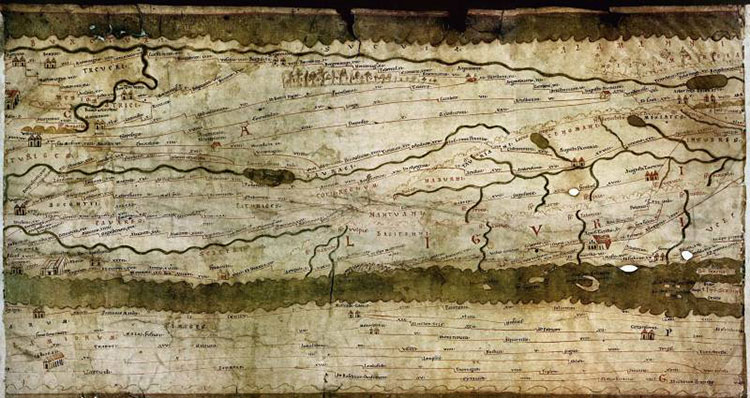
Christian History
Christian Pilgrimage
Christianity has a strong tradition of pilgrimages, both to sites relevant to the New Testament narrative (especially in the Holy Land) and to sites associated with later saints or miracles.
The first pilgrimages were made to sites connected with the ministry of Jesus. Aside from the early example of Origen, who "in search of the traces of Jesus, the disciples and the prophets", already found local folk prompt to show him the actual location of the Gadarene swine in the mid-3rd century, surviving descriptions of Christian pilgrimages to the Holy Land and Jerusalem date from the 4th century. The Itinerarium Burdigalense ("Bordeaux Itinerary"), the oldest surviving Christian itinerarium, was written by the anonymous "Pilgrim of Bordeaux" recounting the stages of a pilgrimage to Jerusalem in the years 333 and 334.

Pilgrimage was encouraged by church fathers and established by Helena, the mother of Constantine the Great. Pilgrimages also began to be made to Rome and other sites associated with the Apostles, Saints and Christian martyrs, as well as to places where there have been apparitions of the Virgin Mary. Pilgrimage to Rome became a common destination for pilgrims from throughout Western Christianity in the medieval period, and important sites were listed in travel-guides such as the 12th-century Mirabilia Urbis Romae.
In the 7th century, the Holy Land fell to the Muslim conquests, and as pilgrimage to the Holy Land now became more difficult for European Christians, major pilgrimage sites developed in Western Europe, notably Santiago de Compostela in the 9th century. Political relationships between the Muslim caliphates and the Christian kingdoms of Europe remained in a state of suspended truce, allowing the continuation of Christian pilgrimages into Muslim-controlled lands, at least in intervals; for example, the Fatimid Caliph al-Hakim bi-Amr Allah ordered the destruction of the Church of the Holy Sepulchre, only to have his successor allow the Byzantine Empire to rebuild it. The Seljuk Turks now systematically disrupted Christian pilgrimage routes, which became one of the major factors triggering the crusades later in the 11th century.
The crusades were at first a success, the Crusader states, especially the kingdom of Jerusalem, guaranteeing safe access to the Holy Land for Christian pilgrims during the 12th century, but the enterprise of the crusades was ultimately doomed to failure, and the Holy Land was entirely re-conquered by the Ayyubids by the end of the 13th century.
Under the Ottoman Empire travel in Palestine was once again restricted and dangerous. Modern pilgrimages in the Holy Land may be said to have received an early impetus from the scholar Ernest Renan, whose twenty-four days in Palestine, recounted in his Vie de Jésus (published 1863) found the resonance of the New Testament at every turn.


